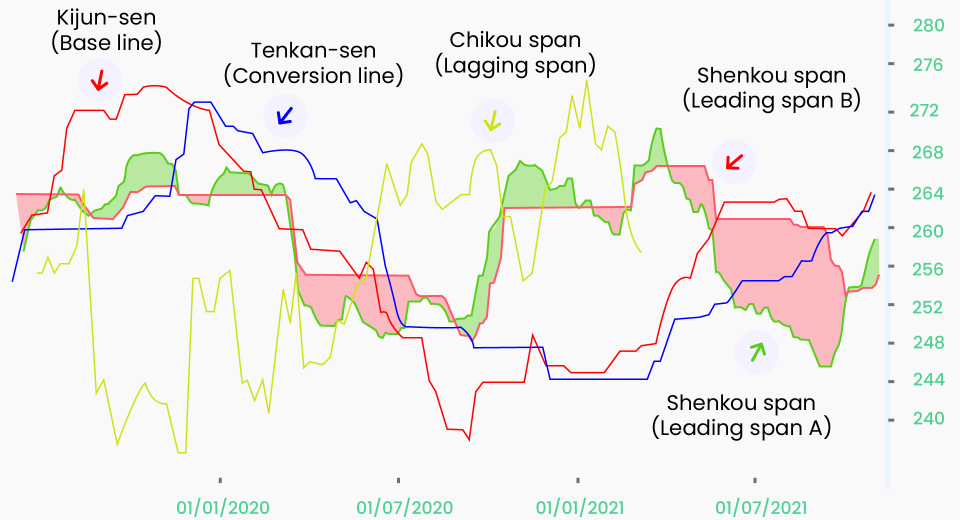Understanding the Pros and Cons of CFD Trading

A contract for difference (CFD) is an agreement between a buyer and a seller. It binds the buyer to pay the seller only the difference in the value of the asset between the opening and closing times of the trade. So, CFDs only consider the change in the price of a security, rather than its actual value.
Due to their accessibility and lower entry barrier, CFDs have become one of the most popular ways of trading currencies, indices, equities, precious metals and commodities like oil and even agricultural produce. Financial market analysts project the CFD market to reach $7.6 billion by 2029. If you want to trade CFDs, here are some pros and cons to keep in mind.
Did you know?
Trading CFDs means traders never own the underlying assets because CFDs are derivative instruments.
Advantages of Trading CFDs
CFD trading does not require a complex trading setup. A smartphone or a desktop is enough. The ease is not the only reason for their popularity, there are many more benefits:
Trade Rising and Falling Markets
Trading CFDs allows traders to speculate on both rising and falling markets. Traders can take a long or short position based on the direction they expect the price to move. Since trading can happen in either direction, this translates to more opportunities for trading any underlying asset.
Trade on Margin
Less initial deposit is required to start trading CFDs. These are highly leveraged products where traders can “borrow money” from brokers to increase their trading power and increase their profit potential. They can trade with bigger positions than the amount they have in their accounts. For instance, a leverage of 10 means trading with 10 times the capital a trader puts in.
Trade Multiple Assets
Since CFDs are leveraged products, they allow a trader to get exposure to a much broader range of markets than they would have been able to get with their account balance. Most brokerages offer CFDs, forex, indices, commodities, shares, and cryptocurrencies. Some platforms even facilitate access to international markets from a single account, allowing traders to diversify their portfolio to a greater extent.
Better Liquidity
CFD prices mirror the movements in the underlying asset. Therefore, in addition to the liquidity offered by the CFD provider, CFD traders can take advantage of the liquidity in the underlying market.
Cost Efficacy
Since the trader does not own the underlying asset, the amount of capital needed to speculate is much less. Also, traders have more control over the realisation of capital gains and, therefore, tax implications of the same. For instance, they can choose to sell a CFD if it exceeds their tax limits. Finally, the brokerage costs and the cost of holding long positions are much lower for CFDs than for traditional instruments.
Greater Flexibility
Most traders allow out-of-hours trading for CFDs. There is no fixed position size, timeframe or expiration date. The volume and duration of the contract are up to the buyer and seller involved in a particular trade.
Participation in Rights Issues
As CFDs mirror the underlying asset markets, CFD trading enables traders to participate in corporate events such as share splits. Traders also receive dividends or bonuses when holding long positions. In fact, CFD traders get them immediately, while share traders must wait until the dividend is issued on the pre-decided date.
Used as a Hedging Tool
Since CFDs allow traders to speculate in either direction, they can hedge other trades or longer-term investments with these derivatives.
Disadvantages of Trading CFDs
There are certain precautions traders must take to maximise CFD trading opportunities:
Advice from the Wise
Given the ease of trading CFDs, overtrading is quite common. It is best for traders to base their trading strategies after considering their risk appetite and funds at hand.
Leverage is a Double-Edged Sword
New traders tend to forget that leverage magnifies both profit potential and risk exposure. If the market moves against their speculated direction, traders may end up losing much more than they would without leverage. So, when trading CFDs, it’s a good idea to use risk management techniques astutely. Stop loss and take profit are very easy to place with every position opened.
Did you know?
Some brokerages offer Guaranteed Stop Loss. This means that even if the price gaps at the stop-loss value, the corresponding position will still be closed.
Weak Regulations
The greater flexibility of CFD trading is because the market is not as stringently regulated as traditional financial instruments. Traders must perform extensive due diligence and choose a broker with a good reputation and financial positioning.
Cost Overruns
Although CFD trading is cost-effective, leaving positions open overnight and not effectively managing costs may result in cost accumulation over the long term.
Tendency to Use Maximum Leverage
Brokers may offer very high leverage for certain instruments. New CFD traders often feel excited about the exposure they can afford with this facility. They begin by using the maximum leverage being offered and could end up with huge losses. It’s a good idea for new traders to begin with low leverage. They can always increase the leverage as they gain confidence and knowledge. The leverage should also align with a trader’s financial goals and risk appetite. Traders can practise and get familiar with this by practising on a demo account.
To Sum Up
- CFDs are highly flexible instruments that allow traders to find trading opportunities in both bearish and bullish markets.
- Traders do not need to own the underlying assets.
- CFDs are leveraged instruments that facilitate trading beyond the available cash in traders’ accounts.
- Both profit potential and risk exposure get equally enhanced with leverage.
- It’s important to conduct thorough research of the instruments and assess your financial profile to set CFD trading goals.
- Traders should use risk management techniques when trading CFDs.
Disclaimer:
All data, information and materials are published and provided “as is” solely for informational purposes only, and is not intended nor should be considered, in any way, as investment advice, recommendations, and/or suggestions for performing any actions with financial instruments. The information and opinions presented do not take into account any particular individual’s investment objectives, financial situation or needs, and hence does not constitute as an advice or a recommendation with respect to any investment product. All investors should seek advice from certified financial advisors based on their unique situation before making any investment decisions in accordance to their personal risk appetite. Blackwell Global endeavours to ensure that the information provided is complete and correct, but make no representation as to the actuality, accuracy or completeness of the information. Information, data and opinions may change without notice and Blackwell Global is not obliged to update on the changes. The opinions and views expressed are solely those of the authors and analysts and do not necessarily represent that of Blackwell Global or its management, shareholders, and affiliates. Any projections or views of the market provided may not prove to be accurate. Past performance is not necessarily an indicative of future performance. Blackwell Global assumes no liability for any loss arising directly or indirectly from use of or reliance on such information herein contained. Reproduction of this information, in whole or in part, is not permitted.




